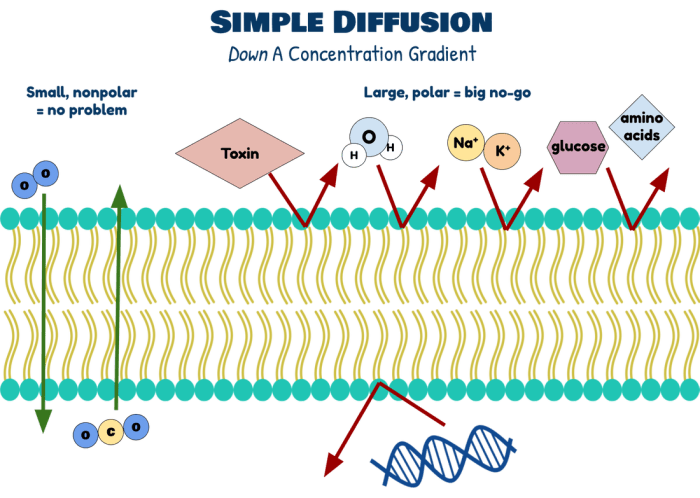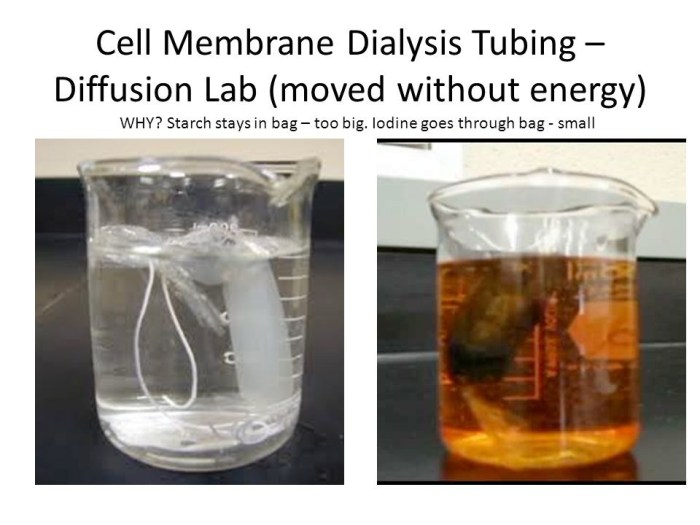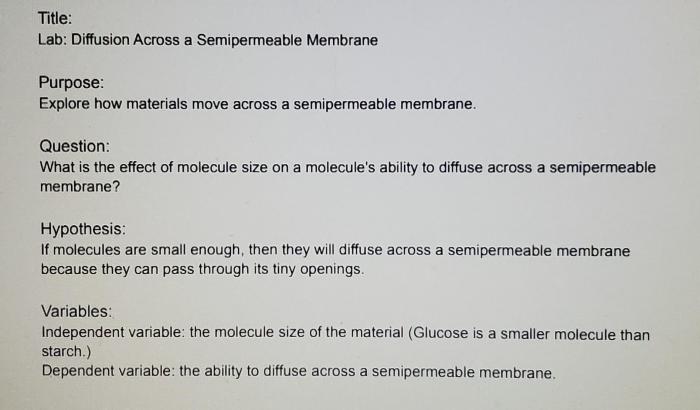Diffusion across a membrane lab answers unravels the complexities of cellular transport, offering a comprehensive exploration of the fundamental principles governing the movement of molecules across biological membranes. This guide provides an immersive journey into the experimental techniques, data analysis, and theoretical underpinnings that illuminate the dynamic nature of membrane diffusion.
Delving into the intricacies of diffusion across membranes, this lab delves into the factors that influence the rate of diffusion, guiding students through the meticulous steps of experimental setup, data collection, and analysis. Statistical tests are employed to enhance the rigor of data interpretation, leading to a deeper understanding of the mechanisms underlying membrane transport.
Introduction: Diffusion Across A Membrane Lab Answers
Diffusion across a membrane is the movement of molecules from an area of high concentration to an area of low concentration. This process is driven by the concentration gradient, which is the difference in concentration between the two areas. The rate of diffusion is affected by several factors, including the temperature, the surface area of the membrane, the thickness of the membrane, and the size of the molecules.
Methods

Materials:
- Diffusion chamber
- Semipermeable membrane
- Solutions of different concentrations
- Pipette
- Timer
Safety precautions:
- Wear gloves and safety goggles when handling chemicals.
- Do not eat or drink in the laboratory.
- Dispose of chemicals properly.
Procedure:
- Set up the diffusion chamber according to the manufacturer’s instructions.
- Fill one side of the chamber with a solution of high concentration and the other side with a solution of low concentration.
- Place the semipermeable membrane between the two solutions.
- Start the timer.
- At regular intervals, take a sample from each side of the chamber and measure the concentration of the solution.
- Continue taking samples until the concentration of the solutions is equal on both sides of the membrane.
Data Collection

The data collected during the lab can be used to create a graph of the concentration of the solutions over time. This graph can be used to determine the rate of diffusion. The rate of diffusion can be calculated using the following equation:“`Rate of diffusion = (Change in concentration) / (Time)“`
Data Analysis

The data collected in the lab can be analyzed using a variety of statistical tests. These tests can be used to determine whether the rate of diffusion is affected by the temperature, the surface area of the membrane, the thickness of the membrane, or the size of the molecules.
Discussion
The results of the lab can be used to understand the process of diffusion across a membrane. The results can also be used to predict how the rate of diffusion will be affected by different factors.
FAQ Summary
What is the significance of diffusion across membranes?
Diffusion across membranes is a fundamental process that enables the exchange of essential molecules between cells and their surroundings. It plays a crucial role in nutrient uptake, waste removal, and the maintenance of cellular homeostasis.
How does temperature affect the rate of diffusion?
Temperature has a direct impact on the rate of diffusion. As temperature increases, the kinetic energy of molecules increases, leading to a faster rate of diffusion.
What are the factors that influence the permeability of a membrane to a particular substance?
The permeability of a membrane to a particular substance depends on its size, charge, polarity, and the presence of specific membrane proteins.